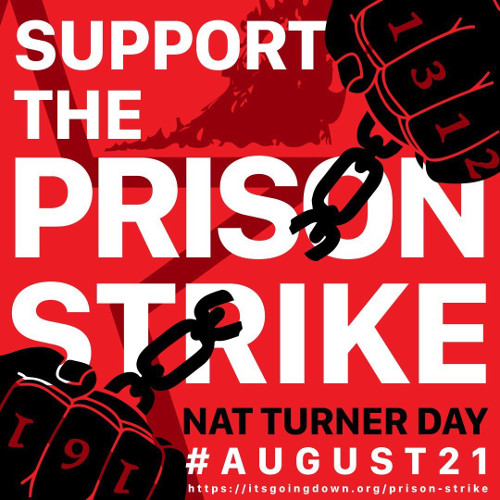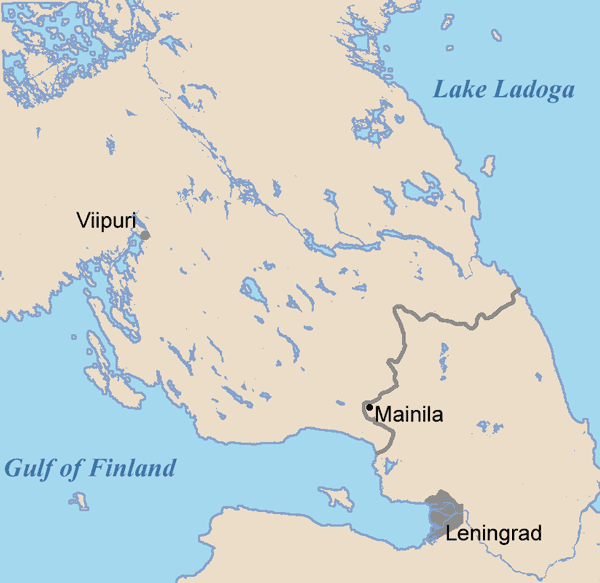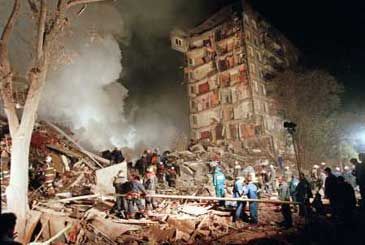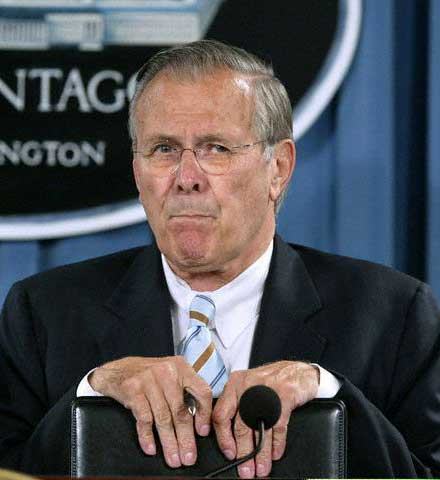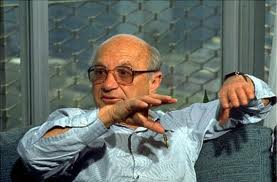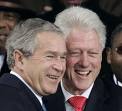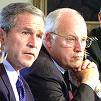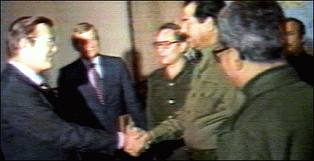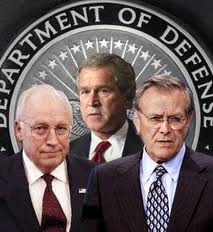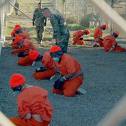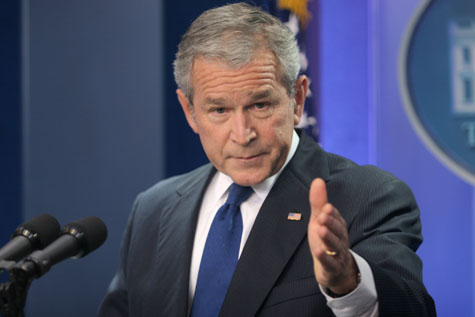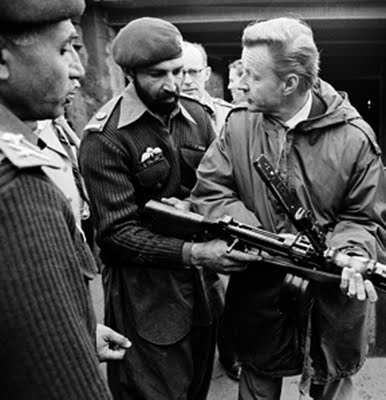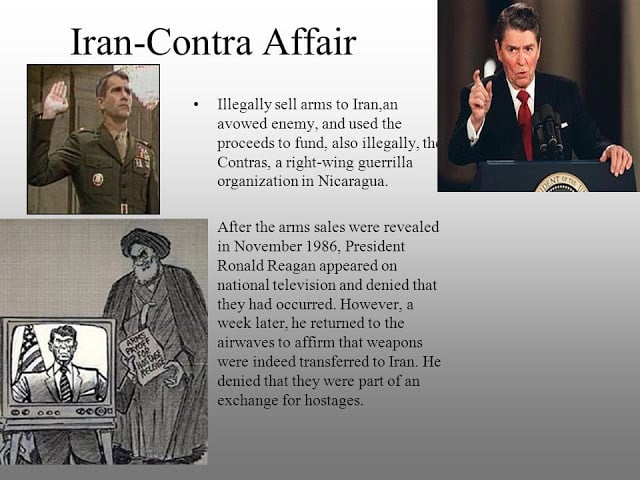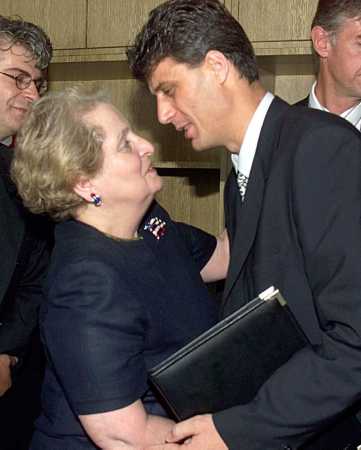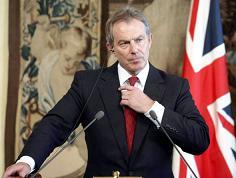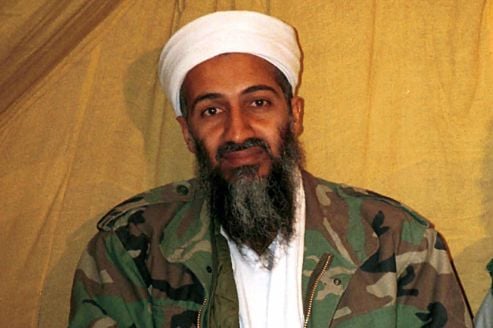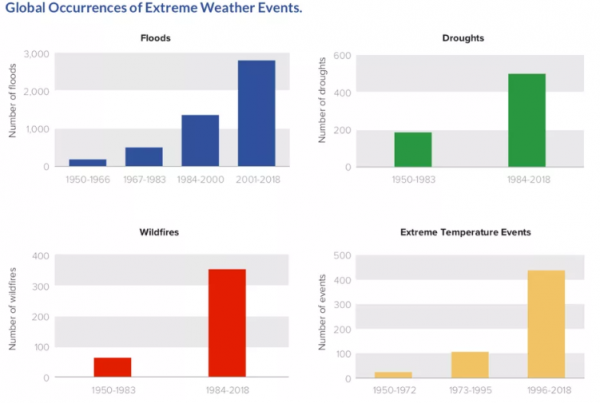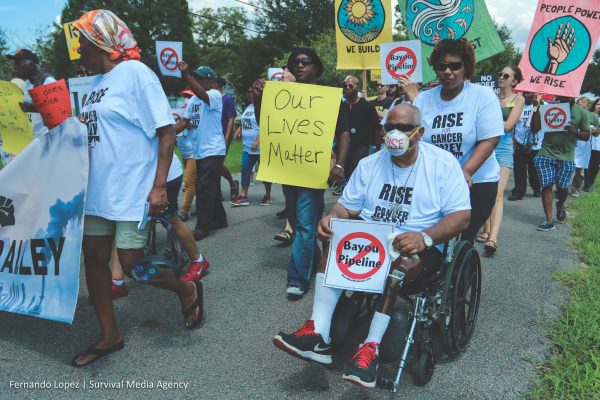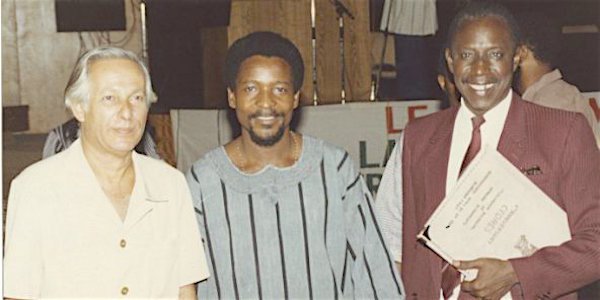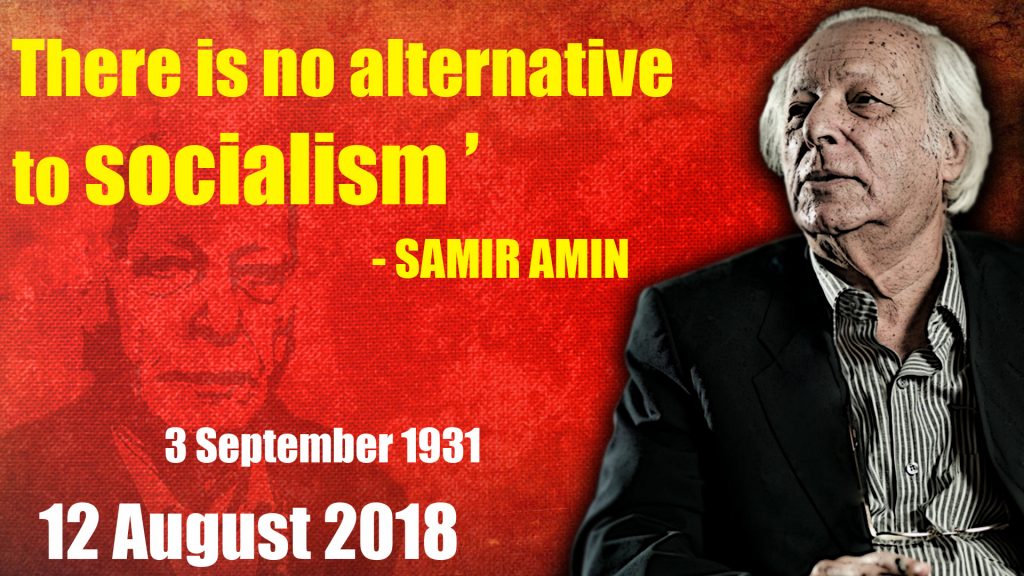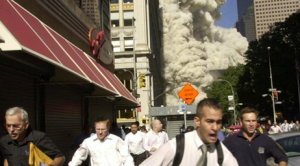Note to readers: please click the share buttons above
First published in September 2007.
GR Editor’s Note
We bring to the attention of our readers this carefully researched analysis.
“Given the warnings of incipient terrorist attacks that had been repeatedly received by the Administration and the FBI, why would anyone coordinate two major annual air training exercises at this time, and divert key resources to the North Pole on an outdated mission? Who was in a position to do this?”
The 911 Commission carefully overlooked these considerations.
“It ignored the issue of the drills and continuously pointed to FAA incompetence. Thus the the mock live hijackings which were apparently in progress on the morning of September 11th should be investigated as a plausible explanation for why the national defense was such an abysmal failure.”
***
Information regarding military exercises is classified and difficult to research. Though there was unusually high and confusing drill activity on 9/11, this strange coincidence has not gained much public notice. This essay quotes military officials from their own magazines, and compares their statements to what the 9/11 Commission wrote about the so-called surprise factor, and also to the Commission’s position that the drills aided the response.
Though both the 9/11 Commission Report and members of the Bush Administration repeatedly stated that the use of planes as weapons could not have been predicted, other official sources indicate that military exercises had been underway to counteract this very possibility.
1. Was it a Surprise that Hijacked Planes Were Used as Weapons on 9/11?
The element of surprise has been widely given (and quoted) as the reason why the 9/11 attacks were so successful against the world’s greatest military power.
Before proceeding to the statements on both sides of the issue, the context for these attacks should be understood in light of three defense procedures which were unusually and significantly changed in the months preceding 9/11:
- A May 8th 2001 Statement by the President gave responsibility for coordinating, training and planning all national defense programs related to weapons of mass destruction to Vice President Cheney, whose office was not part of the National Command Authority. Transportation Secretary Norman Mineta testified before the 9/11 Commission that he was present and observed Dick Cheney in the Presidential Emergency Operating Center tracking the position of Flight 77 for many miles as it approached the Pentagon.1 “Based on Norm Minetta’s testimony and other information, it appears that the military have regarded Cheney as a ‘Deputy Commander-in-Chief’. They also understand that he is the real power behind the throne…It appears that Vice President Dick Cheney was in charge of all the many air defense exercises that took place on the morning of September 11, 2001.”2
- The 1997 hijacking scramble protocol CJCSI 3610, which distinguished emergent situations (requiring immediate action between the FAA and the military) from non-emergent situations (requiring decision input from the highest levels of the DoD) was rewritten June 1, 2001, as ordered by Defense Secretary Donald Rumsfeld.3 As a result, the number of fighter-interceptor scrambles fell from the usual average of 7-8 per month before the rewrite, to zero during the 3.3 months before September 11th, and to zero on September 11th itself.4
- Changes in the dates of annual and semi-annual military air defense exercises resulted in an unprecedented concentration of air drills on September 11th, and included hijackings and drills in which planes hit buildings. These will be explored later.
The transfer of two line defense roles to senior members of the Bush-Cheney Administration, paired with the concentration of air drills on the day itself, raise serious questions regarding the success of the attacks.
Early expressions of surprise over the attacks: In response to the seemingly inexplicable success of the 9/11 attacks, a chorus of astonishment issued from the White House, the military, and the FBI. Tim Ruppert asked Donald Rumsfeld on September 30, 2001 whether he had ever imagined that the Pentagon would be attacked by a terrorist using an American commercial airline. “Oh goodness no! “Never would have crossed anyone’s mind.”5 His Commander-in-Chief had earlier said that “al Qaeda “struck in a way that was unimaginable.”6
General Richard Myer, acting air defense commander, told the military press in late October: “You hate to admit it, but we hadn’t thought about this.”7 FBI Director Robert Mueller declared a week after the attacks, “There were no warning signs that I’m aware of that would indicate this type of operation in the country.”8
White House Press Secretary Ari Fleischer fell into step. “Until the attack took place, I think it is fair to say that no one envisioned that as a possibility.”9
However, on May 17, 2002, CBC News revealed that a 1999 report, “Sociology and Psychology of Terrorism: Who Becomes a Terrorist and Why?” “…warned the executive branch that bin Laden’s terrorists might hijack an airliner and dive bomb it into the Pentagon or other government building.”10
On May 19th, the London Observer quoted a New York newspaper report that “angry citizens are asking why they have suddenly learned what George W. Bush knew all along: that weeks before the event, the CIA had warned the President and other top officials of an active plot to seize civilian aircraft.”11
Later that day, Bob Woodward and Dan Eggen of the Washington Post covered the hijack briefing in more detail:
“The top-secret briefing memo presented to President Bush on Aug. 6 carried the headline, ‘Bin Laden Determined to Strike in U.S.’. . . .The President’s Daily Briefing underscored that Osama bin Laden and his followers hoped to ‘bring the fight to America.’. . .The August 6th memo. . .suggested that bin Laden’s followers might be planning to hijack U.S. airliners.”12
The story had, several days earlier, prompted a press conference from White House spokesman Ari Fleischer, saying: “Never did we imagine what would take place on September 11th, where people use those airplanes as missiles and weapons.” His statement was echoed later in the day by National Security Advisor Condoleezza Rice, as quoted below in a Baltimore Sun article.13
A 2003 Joint Inquiry into the Intelligence Community tells a different story.
The denials continued into 2004, when Donald Rumsfeld told the 9/11 Commission, “I knew of no intelligence during the six-plus months leading up to September 11 to indicate terrorists would hijack commercial airlines, use them as missiles to fly into the Pentagon or the World Trade Center towers.”14
But a Congressional Joint Inquiry report, released July 24th, 2003,15 suggested that the government had failed to act on warnings of a terrorist attack within the country, involving aircraft as missiles. The New York Times published excerpts:
“Shortly after…May 1998…the community began to acquire intelligence that bin Laden’s network intended to strike within the United States. Many of these reports were disseminated throughout the community and to senior U.S. policy makers…the totality of the information…clearly reiterated a consistent and critically important theme: bin Laden’s intent to launch terrorist attacks within the United States…In the spring of 1999, the [intelligence] community obtained information about a planned bin Laden attack on a government facility in Washington, D.C…In September 1999, the community obtained information that bin Laden and others were planning a terrorist act in the United States, possibly against specific landmarks in California and New York City…In March 2000, the community obtained information regarding the type of targets…The Statue of Liberty was specifically mentioned, as were skyscrapers, ports, airports and nuclear power plants…In April 2001, the community obtained information…that bin Laden was interested in commercial pilots as potential terrorists. The source warned that the United States should not focus only on embassy bombings, that terrorists sought “spectacular and traumatic” attacks and that the first World Trade Center bombing would be appealing.” 16
Four days later, the Baltimore Sun published the following:
“President Bush’s adviser [Condoleezza Rice] told the public in May 2002 that a pre-Sept. 11 intelligence briefing for the president on terrorism contained only a general warning of threats and largely historical information, not specific plots, the report said.
But the authors of the congressional report, released last week, stated the briefing given to the president a month before the suicide hijackings included recent intelligence that al-Qaida was planning to send operatives to the United States to carry out an attack using high explosives.
At the same May 2002 press briefing, Rice also said that “I don’t think anybody could have predicted that these people would take an airplane and slam it into the World Trade Center, take another one and slam it into the Pentagon; that they would try to use an airplane as a missile, a hijacked airplane as a missile.”
But the congressional report states that “from at least 1994, and continuing into the summer of 2001, the Intelligence Community received information indicating that terrorists were contemplating, among other means of attack, the use of aircraft as weapons.”17
The contradiction could not be more evident.
Contradictions Within the 9/11 Commission Report:
The Commission reported early in its pages:
“NORAD and the FAA were unprepared for the type of attacks launched against the United States on September 11, 2001. They struggled, under difficult circumstances, to improvise a homeland defense against an unprecedented challenge they had never encountered and had never trained to meet.”18
But the Report later documented, in reference to the use of planes as weapons, that such a “possibility was imaginable, and imagined.” It cited intelligence from the August 1999 Federal Aviation Administration (FAA) Civil Aviation Security that warned about the possibility of a Bin Ladin “suicide hijacking operation,” and that NORAD had “imagined the possible use of aircraft as weapons, too, and developed exercises to counter such a threat—from planes coming to the United States from overseas.”19
The Commission further reported that on August 24, 2001, the CIA had described “subjects involved in suspicious 747 flight training,” and Zacarias Moussaoui as a possible “suicide hijacker;”20 also that the week before the attacks a Minneapolis FBI agent had told the FAA that Moussaoui, was “an Islamic extremist preparing for some future act in furtherance of radical fundamentalist goals.”21 The Commission further noted that on August 23, 2001, CIA Director George Tenet “was briefed about the Moussaoui case in a briefing entitled ‘Islamic Extremist Learns to Fly.’”22
And Louis Freeh, FBI Director from 1993 to June 2001, told the 9/11 Commission that in 2000 and 2001, the subject of “planes as weapons” was always considered in the planning of National Special Security Events (NSSE’s), in which the FBI and FEMA participated, and that “resources were actually designated to deal with that particular threat.” He confirmed that “the use of airplanes, either packed with explosives or otherwise, in suicide missions” was “part of the planning” for NSSE’s.23
A Summary of the Contradictions:
There are thus stark contradictions: 1) between White House spokespersons and each of: The Joint Inquiry into Intelligence Community Activities of July 2003; the August 6, 2001 Presidential Briefing Memo; many press reports detailing the two foregoing documents; and the testimony of FBI Director Louis Freeh; 2) between the 9/11 Commission’s findings and all of the above; and 3) within the 9/11 Commission Report itself.
How did the 9/11 Commission deal with these contradictions? It did not: it simply left out the findings of the Joint Inquiry report and the Louis Freeh testimony, and though it copied the August 6th Presidential Briefing Memo into its Report,24 it did not include the memo in its entirety as quoted by CNN on April 10, 2004.25 And further to that Memo, the Commission referred to Condoleezza Rice’s April 8th Hearing testimony, but did not include it. In it she had said, “I was concerned about possible threats inside the United States.”26
As the foregoing summary shows the element of surprise to have been very much in doubt, a new investigation should question how a non-surprise attack could have been so successful.
2. What did the Military Training Drills Reveal about US Expectations?
The military exercises of 9/11 will be examined in relation to two of the things that the Commission blamed for the critical element of surprise:
- the unheard of concept of using hijacked planes as weapons—a departure from predictable, traditional hijackings, and
- the fact that the attacks originated, unpredictably, from within the country, and not from outside it.
Two 9/11 Commission Report quotations below document these perceptions:
“In sum, the protocols in place on 9/11 for the FAA and NORAD to respond to a hijacking presumed that. . .the hijacking would take the traditional form: that is, it would not be a suicide hijacking designed to convert the aircraft into a guided missile.”27
“America’s homeland defenders faced outward. NORAD itself was barely able to retain any alert bases. Its planning scenarios occasionally considered the danger of hijacked aircraft being guided to American targets, but only aircraft that were coming from overseas.”28
The Pre 9/11 Military Training Drills: Though neither the White House nor the FBI had envisaged planes as weapons, the military, supposedly adrift from its government and bereft of communication –no small feat with a 2001 budget of over $400 billion — had.
According to Professor John Arquilla, a Special Operations expert at the Naval Postgraduate School, “The idea of such an attack (like 9-11) was well known. It had been wargamed as a possibility in exercises before Sept. 11, 2001.”29
The following exercises demonstrate that many military minds were concerned with the express idea of planes hitting buildings.
In October 2000, a military exercise created a scenario of a simulated passenger plane crashing into the Pentagon. The exercise was coordinated by the Defense Protective Services Police and the Pentagon’s Command Emergency Response Team.30
US Medicine reports that two health clinics housed within the Pentagon trained for a hijacked airplane to hit the Pentagon in May 2001. “Though the Department of Defense had no capability in place to protect the Pentagon from an ersatz guided missile in the form of a hijacked 757 airliner, DoD medical personnel trained for exactly that scenario in May.”31
The Department of Transportation in Washington held an exercise on August 31, 1001, which was described by a participant, Ellen Engleman:
“Ironically, fortuitously, take your choice, 12 days prior to the incident on September 11th, we were going though a tabletop exercise. It was actually much more than a tabletop…in preparation for the Olympic…which was a full intermodal exercise…Part of the scenario, interestingly enough, involved a potentially highjacked plane and someone calling on a cell phone, among other aspects of the scenario that were very strange when twelve days later, as you know, we had the actual event.”32
According to USA Today:
“In the two years before the Sept. 11 attacks, the North American Aerospace Defense Command conducted exercises simulating what the White House says was unimaginable at the time: hijacked airliners used as weapons to crash into targets and cause mass casualties…One of the imagined targets was the World Trade Center…NORAD, in a written statement, confirmed that such hijacking exercises occurred…‘Numerous types of civilian and military aircraft were used as mock hijacked aircraft,’ the statement said…The exercises differed from the Sept. 11 attacks in one important respect: The planes in the simulation were coming from a foreign country…But there were exceptions in the early drills, including one operation, planned in July 2001 and conducted later, that involved planes from airports in Utah and Washington state that were “hijacked… Until Sept. 11, 2001, NORAD conducted four major exercises a year. Most included a hijack scenario, but not all of those involved planes as weapons.”33
The New Yorker reported:
“A former top F.B.I. official said that the bureau had been concerned about an attack in New York City ever since…associates of Osama bin Laden…were convicted in federal court in connection with the 1998 bombing of American embassies in Africa. …During the last several years, the government regularly planned for and simulated terrorist attacks, including scenarios that involved multiple-plane hijackings.”34
One such multiple hijacking drill using planes from inside the United States was Amalgam Virgo 2002, planned for 1500 people in July 2001 and scheduled for operation in June 2002. In the Second 9/11 Commission Hearing, Commissioner Richard Ben-Veniste was foiled in several attempts to extract information from General McKinley and Colonel Scott regarding this drill:
MR. BEN-VENISTE: …My question is: The concept of terrorists using airplanes as weapons was not something which was unknown to the U.S. intelligence community on September 10th, 2001, isn’t that fair to say?
GEN. MCKINLEY: I’d like the intelligence community to address that. I would find it hard to believe that they hadn’t speculated against that. But it was unavailable to us at the time.
MR. BEN-VENISTE: Well, let’s start, for example, with September 12th, 1994, a Cessna 150L crashed into the South Lawn of the White House, barely missing the building, and killing the pilot. Similarly, in December of 1994, an Algerian armed Islamic group of terrorists hijacked an Air France flight in Algiers and threatened to crash it into the Eiffel Tower. In October of 1996, the intelligence community obtained information regarding an Iranian plot to hijack a Japanese plane over Israel and crash it into Tel Aviv. In August of 1988, the intelligence community obtained information that a group of unidentified Arabs planned to fly an explosive-laden plane from a foreign country into the World Trade Center. The information was passed on to the FBI and the FAA.
In September of 1998, the intelligence community obtained information that Osama bin Laden’s next operation could possibly involve flying an aircraft loaded with explosives into a U.S. airport and detonating it. In August 2001, the intelligence community obtained information regarding a plot to either bomb the U.S. Embassy in Nairobi from an airplane, or crash an airplane into it. In addition, in the Atlanta Olympics, the United States government and the Department of Justice and my colleague Jamie Gorelick were involved in planning against possible terrorist attacks at the Olympics, which included the potential of an aircraft flying into the stadium. In July 2001, the G-8 summit in Genoa, attended by our president, among the measures that were taken were positioning surface-to-air missile ringing Genoa, closing the Genoa airport and restricting all airspace over Genoa.
Was not this information, sir, available to NORAD as of September 11th, 2001?
GEN. MCKINLEY: … we had not postured prior to September 11th, 2001, for the scenario that took place that day.
MR. BEN-VENISTE: Well, obviously it would be hard to imagine posturing for the exact scenario. But isn’t it a fact, sir, that prior to September 11th, 2001, NORAD had already in the works plans to simulate in an exercise a simultaneous hijacking of two planes in the United States?
This question was followed by a wall of obfuscation from General McKinley and Colonel Scott, and Ben-Veniste never did get an answer.35 Nor was the matter included in the Commission Report.
Ben-Veniste also questioned the officers on the “vestigial” nature of planning primarily for Cold War attacks from Russia and other nations beyond US borders.36 (And on this point, Major Arias had told the News Herald in June 2001 that “The Cold War is over”.)
These two points raise disturbing questions as to why Vigilant Guardian diverted much of the US defense fleet to the North Pole that day; who made the decision that this should occur; and why NORAD and the Commission were so silent about the hijacking drills.
Air Training Drills the Morning of September 11th:
On the morning of September 11th, two nationwide annual air defense drills were in full stride.
NORAD was in the midst of one of its four major annual exercises, the week-long “Vigilant Guardian”, which the Commission described as “postulat[ing] a bomber attack from the former Soviet Union.”37
A second annual global readiness exercise, Global Guardian, which had traditionally been held in October or November, and which, according to NBC News military analyst William Arkin, had been scheduled for October 22-31, 2001,38 was also underway. The Space Observer, a military newspaper, reported on March 23rd 2001 that this exercise was scheduled for October 2001,39 which meant that sometime after March 23rd, Global Guardian was rescheduled for early September.
Third, Richard Clarke, in his book “Against All Enemies”, noted that acting Joint Chiefs of Staff (JSC) Chairman Richard Myers told him in a videoconference on 9/11, “Not a pretty picture, Dick…We are in the middle of Vigilant Warrior, a NORAD exercise.”40
Information about military drills is classified and difficult to research. There have been suggestions that Richard Clarke confused this drill with Vigilant Guardian (the North Pole drill) but Vigilant Guardian is a NORAD exercise, apparently without JSC involvement. It has also been reported41 that the “Warrior” designation equates to JSC involvement and includes “live-flies”. A NORAD press release, reported in USA Today in 2004, stated that, “These ‘mock hijacked aircraft,’ otherwise called ‘live-flies,’ are used sometimes in air-based war games involving hijacking scenarios. They are actual planes of a variety of makes, in the air (manned or under remote control), pretending to be hijacked for the benefit of effective training.”42
Thus the evidence suggests that mock hijacks were in progress on September 11th, which would explain the reports of military officers in the next section.
There were more “planes into buildings” scenarios going on that morning. “In what the government describes as a bizarre coincidence, one U.S. intelligence agency was planning an exercise last Sept. 11 in which an errant aircraft would crash into one of its buildings… The National Reconnaissance Office had scheduled an exercise…in which a small corporate jet would crash into…the agency’s headquarters building after experiencing a mechanical failure. …The agency is about four miles from the runways of Washington Dulles International Airport.”43
Finally, USA Today reported that “a joint FBI/CIA anti-terrorist task force that specifically prepared for this type of disaster” was on a “training exercise in Monterey, Calif.” Thus, “as of late Tuesday, with airports closed around the country, the task force still hadn’t found a way to fly back to Washington.”44 Furthermore, the FBI had deployed “all of its anti-terrorist and top special operations agents at a training exercise (complete with all associated helicopters and light aircraft) in Monterey, California.” While the attacks were in progress, then, “the chief federal agency responsible for preventing such crimes was being AWOL.”45
A Summary of the Contradictions:
There is a strong and clear contradiction between the White House and 9/11 Commission claims of wildly unpredictable surprise attacks, and the training exercises which were running to counter such attacks. In short, these training exercises reflected an expectation that multiple, simultaneous, internal hijackings using planes as weapons were very imaginable indeed.
How did the Commission deal with this problem? With the exception of one footnote mentioning Northern Vigilance, it simply failed to mention the drills at all. By repeatedly claiming that no one had expected such attacks to have originated from within the United States, it diverted attention away from the drills, and away from warnings that there were Muslim operatives within the country who were learning to fly commercial airliners.
Were these diversions merely cowardly flights from a failed responsibility, or were they more ominous indications of foreknowledge? This crucial question should be the subject of a new impartial investigation.
If, as the evidence suggests, the White House and the Commission were not surprised by such attacks (whereas in fact they were aware of such events)46 the new investigation should ask why they said they were.
- Did the 9/11 Military Training Drills Help or Harm the Response?
As mentioned above, the only reference made by the 9/11 Commission to the September 11th training exercises was to Vigilant Guardian, in footnote 116 from Chapter 1 of the Report:
“On 9/11, NORAD was scheduled to conduct a military exercise, Vigilant Guardian, which postulated a bomber attack from the former Soviet Union. We investigated whether military preparations for the large-scale exercise compromised the military’s response to the real-world terrorist attack on 9/11. According to General Eberhart, “it took about 30 seconds” to make the adjustment to the real-world situation. Ralph Eberhart testimony, June 17, 2004. We found that the response was, if anything, expedited by the increased number of staff at the sectors and at NORAD because of the scheduled exercise. See Robert Marr interview (Jan. 23, 2004).”47
Unfortunately for the Commission, this conclusion has been contradicted by many military participants that day.
Remember, all of NORAD was participating in Vigilant Guardian that morning. Other exercises were also running. As one research organization noted, “NORAD is thus fully staffed and alert, and senior officers are manning stations throughout the US. The entire chain of command is in place and ready when the first hijacking is reported.”48
Almost immediately, however, confusion and bewilderment set in:
At 8:40, Deskins noticed senior technician Jeremy Powell waving his hand. Boston Center was on the line, he said. It had a hijacked airplane.
“It must be part of the exercise,” Deskins thought.
At first, everybody did. Then Deskins saw the glowing direct phone line to the Federal Aviation Administration.
On the phone she heard the voice of a military liaison for the FAA’s Boston Center.
“I have a hijacked aircraft,” he told her.
Six minutes later, at 8:46, the exercises were still causing confusion: “Deskins ran to a nearby office and phoned 1st Air Force Chief Public Affairs Officer Major Don Arias in Florida. She said NEADS had a hijacked plane, no, not the simulation likely heading for JFK.
ABC News quoted NORAD Commander Major General Arnold, from a command center at the Tyndall Air Force Base in Florida. “First thing that went through my mind was, ‘Is this part of the exercise? Is this some kind of a screw-up?'”49
NEADS Major Nasypany later recalled:
“When they told me there was a hijack, my first reaction was ‘Somebody started the exercise early,'” Nasypany later told me. The day’s exercise was designed to run a range of scenarios, including a “traditional” simulated hijack in which politically motivated perpetrators commandeer an aircraft, land on a Cuba-like island, and seek asylum. “I actually said out loud, ‘The hijack’s not supposed to be for another hour.'”50
Later yet, at 9:09 AM, Richard Clarke reports that FAA Command Center Head Jane Garvey told him by videoconference, “We have reports of eleven aircraft off course or out of communications.”51 This was verified in an aviation report, “…the FAA command center then reported 11 aircraft either not in communication with FAA facilities, or flying unexpected routes.”52
Major-General Larry Arnold recalled,
“As I walked out of a video teleconference with NORAD, someone came up and told me that the Northeast Air Defense sector had a possible hijacking. My first thought was the hijacking was part of the exercise…Then we began getting calls of other potential hijackings. Not all the calls were true. These hijacking reports added to the confusion… We were receiving many reports of hijacked aircraft. When we received those calls, we might not know from where the aircraft had departed. We also didn’t know the location of the airplane…By the end of the day, we had twenty-one aircraft identified as possible hijackings.”53
In a 2006 interview with Vanity Fair, Arnold went further: “I’ll be the first to admit that immediately after—-in fact, for a long time after—-we were very confused with who was what and where, what reports were coming in.”54
Robert Marr, head of NEADS on 9/11, says, “At one time I was told that across the nation there were some 29 different reports of hijackings.”55
General Richard Meyers at the Pentagon confirmed that “conflicting reports throughout the morning led to confusion in the Command Center.”56 The Commission itself documented, “During the course of the morning, there were multiple erroneous reports of hijacked aircraft in the system.”57
Thus it would appear that simultaneous air defense drills were fogging the defense data streams and that personnel were chasing 4 real hijacked airplanes among 29 unidentified blips.
And so there is a profound contradiction between the Commission’s position that the drills enhanced the defense response, and the reports by officers on duty that day.
Summary of the Contradictions:
Why, when only 4 planes were hijacked, were there so many reports of other hijacked planes? And why were the military personnel so ready to interpret these hijacking reports as being part of the exercises, when no one had ever “imagined” such a thing?
Given the warnings of incipient terrorist attacks that had been repeatedly received by the Administration and the FBI, why would anyone coordinate two major annual air training exercises at this time, and divert key resources to the North Pole on an outdated mission? Who was in a position to do this?
Commissioner Richard Ben-Veniste resolved to pursue these questions “very very diligently”, and made determined efforts to do so.
But what did the Commission do about his unanswered questions? It ignored the issue of the drills and continuously pointed to FAA incompetence.58 However, blaming the FAA lacked credibility, because the failures of duty were not followed up and no one was disciplined.
Thus the the mock live hijackings which were apparently in progress on the morning of September 11th should be investigated as a plausible explanation for why the national defense was such an abysmal failure.
If the drills impeded the response, a new investigation should question why the two strange departures from longstanding air defense protocols were made in the months before 9/11.
And if the drills enhanced the response, a new investigation should ask how the attacks could have succeeded on a day when the country was especially prepared to handle them.
Either way, the situation cries out for clarification.
NOTES
1 9/11 Commission Transportation Secretary Norman Mineta Testimony.
http://www.youtube.com/results?search_query=norman+mineta
2 Colonel Robert Bowman, PhD, U.S. Air Force(ret.)
Director of Advanced Space Programs Development under Presidents Ford and Carter. Email, September 26, 2007.
3 The flight base commanders were required by the June 1st “Joint Chiefs of Staff Instruction” to seek approval from the Secretary of Defense before responding to hijackings, whereas before the rewrite they could have responded routinely. Robin Hordon, retired pilot and FAA officer, has ”emphasized that the debate has deliberately been channeled by NORAD and the government to focus on reactions to hijackings, when the real issue is the emergency condition of the aircraft well before a hijacking is even confirmed.” http://www.unexplained-mysteries.com/forum/index.php?showtopic=36598&st=90
4 Guns and Butter. Interview with Robin Hordon, former FAA ATC, Boston Center. KPFA Radio, April 18, 2007.)
(http://www.kpfa.org/archives/index.php?arch=19792)
The original and the rewritten documents are available at
http://www.dtic.mil/doctrine/jel/cjcsd/cjcsi/3610_01.pdf (7/31/1997: CJCSI 3610.10 and
http://www.dtic.mil/doctrine/jel/cjcsd/cjcsi/3610_01a.pdf (6/01/2001: CJCSI 3610.10A)
5 “Text: Rumsfeld on NBC’s ‘Meet the Press’”, September 30, 2001.
(http://www.washingtonpost.com/wp-srv/nation/specials/attacked/transcripts/nbctext_093001.html)
6 White House News Release. “President Meets with Muslim Leaders,” Sept. 26, 2001.
http://www.whitehouse.gov/news/releases/2001/09/20010926-8.html
7 American Free Press Service, Oct. 23rd, 2001.
(http://www.defenselink.mil/news/newsarticle.aspx?id=44621)
8 Text: Justice Department Briefing, Washington Post, Monday, Sept. 17, 2001. http://www.washingtonpost.com/wp-srv/nation/specials/attacked/transcripts/justice091701.html
9 What Bush Knew Before Sept. 11,” Washington, May 17, 2002
(http://www.cbsnews.com/stories/2002/05/16/attack/main509294.shtml )
10 Ibid.
11 Ed Vulliamy. “A Bad Call?” Observer, May 19, 2002 (citing Joe Conason of the New York Observer.)
12 Bob Woodward and Dan Eggen. “Aug. Memo Focused On Attacks in U.S.” Washington Post, May 19, 2002.
(http://www.washingtonpost.com/ac2/wp-dyn?pagename=article&node=&contentId=A35744-2002May17¬Found=true).
A transcript of this presidential briefing was later published by CNN: “Transcript: Bin Laden detrmined to strike in US,” April 10, 2004.
(http://www.cnn.com/2004/ALLPOLITICS/04/10/august6.memo/index.html)
13 The White House. “Press Briefing by Ari Fleischer,” May 16, 2002.
(http://www.whitehouse.gov/news/releases/2002/05/20020516-4.html)
Rice’s statement is at (http://www.whitehouse.gov/news/releases/2002/05/20020516-13.html)
14 “Bush, Clinton figures defend terrorism policies,” CNN Report, March 24, 2004.
http://edition.cnn.com/2004/ALLPOLITICS/03/23/911.commission/index.html
15 “9/11 Report: Joint Congressional Inquiry. Report of the Joint Inquiry into the Terrorist Attacks of September 11, 2001 – by the House Permanent Select Committee on Intelligence and the Senate Select Comminttee on Intelligence. 858 p. Published 2002 and publicly released on July 24, 2003. http://news.findlaw.com/hdocs/docs/911rpt/
16 “Excerpts From Report on Intelligence Actions and the Sept. 11 Attacks,” NYT, July 25, 2003. Available for purchase at (http://www.nytimes.com/2003/07/25/national/25TTEX.html?ex=1189569600&en=87b62bfc380ea076&ei=5070
See also, “9/11: Threats about airplanes as weapons prior to 9/11,” Dr. Matthew Robinson, Associate Professor of Criminal Justice, Appalachian State University, http://www.justiceblind.com/airplanes.html, and see, “US Received Warnings of “Airplanes As Weapons,” By Dana Priest, Washington Post, Sept. 19, 2002. http://www.globalpolicy.org/wtc/analysis/2002/0918warn.htm
(article has disappeared from the WP website and the Lexis Nexis database) See also: Michael Isikoff and Mark Hosenball, “The Secrets of September 11. The White House is battling to keep a report on the terror attacks secret. Does the 2004 election have anything to do with it?” Newsweek, April 30, 2003. The quoted material, printed in December 2002, became available to the public on July 24, 2003, at
http://www.gpoaccess.gov/serialset/creports/pdf/fullreport_errata.pdf, and is found on pp. 124-5.
17 “9/11 report, Rice remarks in conflict: Investigators say Bush got specific data on threats,” Associated Press, July 29, 2003
http://www.baltimoresun.com/business/nationworld/bal-te.rice29jul29,0,2620591.story?coll=bal-business-headlines
18 9/11CR, p. 45.
19 9/11CR, pp. 345-6.
20 9/11CR, p. 274.
21 9/11CR, p. 273.
22 Ibid., p. 275.
23 Public hearings of the National Commission on Terrorist Attacks Upon the United States, 10th, April 13, 2004, p. 28.
http://www.9-11commission.gov/hearings/index.htm
24 9/11CR, pp.261-2.
25 CNN Report. “Transcript: Bin Laden determined to strike in US”, Saturday, April 10, 2004. (http://www.cnn.com/2004/ALLPOLITICS/04/10/august6.memo/index.html) This transcript includes a sentence left out by the 9/11 Commission Report: “An Egyptian Islamic Jihad (EIJ) operative told – – service at the same time that bin Laden was planning to exploit the operative’s access to the U.S. to mount a terrorist strike.”
26 Public hearings of the National Commission on Terrorist Attacks Upon the United States, 9th, April 8, 2004, p. 8.
http://www.9-11commission.gov/hearings/index.htm
27 9/11CR, p. 18.
28 9/11CR, p. 352.
29 Kevin Howe. “Expert Stresses Need for Intelligence.” Monterey County Herald, July 18, 2002. (http://web.archive.org/web/20021128002557/http://www.montereyherald.com/mld/montereyherald/3686928.htm)
30 Dennis Ryan. “Contingency planning Pentagon MASCAL exercise simulates scenarios in preparing for emergencies,” Nov. 3, 2000.
http://www.mdw.army.mil/content/anmviewer.asp?a=290
31 Matt Mientka.”Pentagon Medics Trained For Strike,” U.S .Medicine, October 2001. (http://www.usmedicine.com/article.cfm?articleID=272&issueID=31)
32 National Transportation Security Summit. Washington, DC, Oct. 30, 2001. “MTI Report S-01-02,” Mineta Transportation Institute, San José State University,2001. http://transweb.sjsu.edu/mtiportal/research/publications/documents/terrorism/Terrorism%20Symposium%202001.htm
33 Steven Komarow and Tom Squitieri. “NORAD had drills of jets as weapons,” USA Today, April 18, 2004,
http://www.usatoday.com/news/washington/2004-04-18-norad_x.htm
34 “September 11, 2001,” The New Yorker, September 24, 2001.
(http://web.archive.org/web/20020215175752/http://www.newyorker.com/fact/content/?010924fa_FACT)
35 Public hearings of the National Commission on Terrorist Attacks Upon the United States, 2nd, Day 2, May 23, 2003.
(http://www.9-11commission.gov/archive/hearing2/9-11Commission_Hearing_2003-05-23.htm)
This lack of cooperation with Commissioner Ben-Veniste is underscored by the fact that the 10-member Commission panel was forced to issue subpoenas to both NORAD and the FAA, and encountered “serious delays” in obtaining information from the Defense Department. “We are especially dismayed by problems in the production of records of activities of NORAD and certain Air Force commonds on Sept. 11th,” the panel reported.(In the Commission’s November 7 Press Release,
see http://www.fas.org/irp/news/2003/11/911-110703.pdf)
A second subpoena served on the Pentagon was similarly unsuccessful in obtaining records. (Philip Shenon. 9/11 Panel Issues Subpoena to Pentagon. Washington Post, Nov. 8, 2003.
http://nucnews.net/nucnews/2003nn/0311nn/031108nn.htm#501)
36 Ibid.
37 9/11CR, p. 458.
38 Arkin, William M. “Code Names: Deciphering U.S. Military Plans, Programs and Operations in the 9/11 World”, Steerforth, 2005, p. 379.
39 “21st Space Wing Priorities,” Space Observer, March 23, 2001, p. 2.
http://web.archive.org/web/20030320100542/http:/www.peterson.af.mil/21sw/observer/23mar01.pdf
40 Richard A. Clarke. “Against all Enemies: Inside America’s War on Terror”, Free Press, 2004, pp. 4-5.
41 “Wargame IV: Vigilant Warrior.”
http://they-let-it-happen.blogspot.com/2007/01/wargame-iv-vigilant-warrior.html
42 Steven Komarow and Tom Squitieri. “NORAD had drills of jets as weapons,” USA Today, April 18, 2004,
http://www.usatoday.com/news/washington/2004-04-18-norad_x.htm
43 John J. Lumpkin, Associated Press. “Agency planned exercise on Sept. 11 built around a plane crashing into a building,” August 21, 2002.
http://www.boston.com/news/packages/sept11/anniversary/wire_stories/0903_plane_exercise.htm
44 Bill Nichols, Homeland defense needs now ‘grim reality,’ Sept. 11, 2001.
(http://www.usatoday.com/news/nation/2001/09/11/security.htm)
45 .” U.S. Devastated by Terrorist Attacks: Bush Faces Defining Moment, As Others Scramble For Advantage.” USA Today, Sept. 11, 2001. http://web.archive.org/web/20030312214742/http://www.evote.com/features/2001-09/091101attack.asp
46 See Commissioner Ben-Veniste’s long list of prior incidents, cited above.
47 9/11CR, p. 458.
48 Cooperative Research. “Complete 9/11 Timeline. Military Exercises up to 9/11.”
(http://www.cooperativeresearch.org/timeline.jsp?timeline=complete_911_timeline&before_9/11=militaryExercises)
49 “Moments of Crisis, Part 1: Terror Hits the Towers: How Government Officials Reacted to Sept. 11 Attacks.” ABC News, September 14, 2002. http://s3.amazonaws.com/911timeline/2002/abcnews091402.html
50 Michael Bronner. “9/11 Live: The NORAD Tapes.” Vanity Fair, August 2006, p. 2.
http://www.vanityfair.com/politics/features/2006/08/norad200608?currentPage=10
51 Richard A. Clarke. “Against all Enemies: Inside America’s War on Terror”, Free Press, 2004, pp. 4-5.
52 William B. Scott. “Exercise Jump-Starts Response to Attacks, Aviation Week & Space Technology, June 3, 2002. http://web.archive.org/web/20020917072642/http://www.awstonline.com/ or
http://911research.wtc7.net/cache/planes/defense/aviationnow_jumpstart.htm
53 “Conversation With Major General Larry Arnold, Commander, 1st Air Force, Tyndall AFB, Florida.” Code One, An Airpower Projection Magazine, 1st Quarter, 2002. http://www.codeonemagazine.com/archives/2002/articles/jan_02/defense/
54 Michael Bronner. “9/11 Live: The NORAD Tapes.” Vanity Fair, August 2006, p. 10.
55 Robert A. Baker. “Commander of 9/11 Air Defenses Retires.” Newhouse News Service, March 31, 2005. (http://web.archive.org/web/20050519084002/http://www.newhousenews.com/archive/baker033105.html
56 Kathleen Rehm, “Myers and Sept. 11: ‘We Hadn’t Thought About This,’” American Forces Press Service, Oct. 23, 2001.
http://www.defenselink.mil/news/newsarticle.aspx?id=44621
57 9/11CR, p. 28.
58 9/11CR. The first 30 pages of the Commission Report alone contain statements criticizing the FAA for delays and false assumptions on pages 11, 26, 27, 29, and 30.
